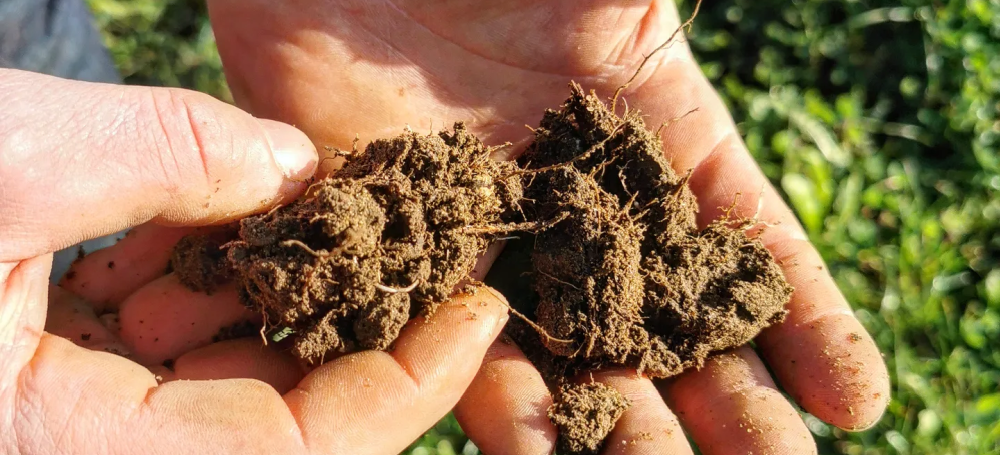
It’s fair to say that we have visited quite a few farms over the years. In the ever-evolving quest to source high quality and ethically produced meat, we have traversed the highways from Inverness to Somerset. We have also spent many hours on trains and many more waiting on platforms, having missed connections because we’ve suddenly realised that we are all wearing the wellies that the farmer lent us - and thus have had to drive back to the estate.
These trips are important though because it gives us a true sense of provenance and understanding. Every day is a learning day after all and as twee as it sounds, you can only really do that by standing in a field with some fine-looking cattle and listening. To the farmer that is. Not the cows.
As a result, we like to think that our field-to-plate knowledge base is pretty comprehensive. However, after a run out to rural Berkshire six months ago, it soon became apparent that a few elements still alluded us and it had been under our feet all this time - namely the soil. We really didn’t know much about the soil.
This trip had been organised by James Daniel of Grassroots Farming, a newly formed collective who are on a mission to promote restorative practices in the industry. It’s a complex system but the real drawback for commercial farming is that it is extractive. After the last 50 years or so, the race to increase yields is now steadily catching up with us and whilst notions of sustainability are becoming standard, the real drive or focus should now be on regeneration.
Which brings us back to Berkshire, with James standing in front of us, brandishing a spade. After the usual perusal of Hereford cows gently nibbling away, James leapt over some electric fencing, into an adjacent section of the field that was full of scrub and turnip tops. He then thrust his spade into the ground and pulled up a clod. The earth looked a bit like dark and crumbly Christmas pudding, with worms and roots interspersed and dangling out. In some ways, the structure reminded us of the marbling you get on a decent rib-eye.

James then piped up – ‘Right, we have been working with this farm for a while now and if you had come here a couple of years ago, the soil would have been completely different. It would have been quite sandy, loose, and dry. Largely due to the use of fertilisers. One of the reasons that we have been able to turn things around, is because of those cattle over there.’
With that, the electric fencing was pulled up and moved across the vegetable tops by about 10 metres. Once the fence was staked back down, the herd of cattle quickly swooped over and began their next round of feasting on brassicas.
In a way, it was a bit of a neat parlour trick but with further explanation, James then described the process. The cows eat the fauna and grass and trim everything back. As a result, in an effort for the plants to continually grow, the root structure buries down deeper - which strengthens and enhances the soil. Ordinarily, once in its adult or ‘seed’ stage, the plant would then stop growing.
The scrub and grass also draw in carbon from the atmosphere, through photosynthesis, and as long as it isn’t released by the soil being ploughed, this carbon gets stored in the ground. We are a way off from quantifying net carbon capture in this way, but the results are looking significant already.
Then there is the impact that the soil has on our rivers and waterways. Good, well-structured soil behaves like a sponge and filtration for rainwater and keeps it in the ground. This in turn, acts as a defence against flash-flooding.
Lest we forget that the cows fertilise the land as they move on, which improves the biodiversity of other animals and insects and…and…and…

Well, by this point, our minds were fairly blown. In all honesty, we just wanted to work out why the beef we were getting through Grassroots tasted so good. But it was certainly a tipping point for us and a great introduction into the importance of soil.
Since then, we have been working further with the team, to curate and develop a new range for our customers and from today, we have four Grassroots Boxes for you to choose from. But the journey will not stop here, and it is our commitment at Turner & George to expand the range and educate our customers about the benefits of regenerative meat.
Most importantly, the support of this supply chain is going to be vital for farmers and through this blog, you’ll be getting to meet another one called James, who resides in Shropshire. We’ve got some great video footage of the cows for that post. Roaming from one side to the other.
You know, doing that trick.
Head here to check out the T&G Grassroots Range



Leave a comment